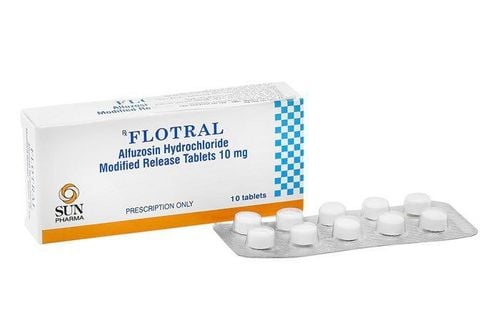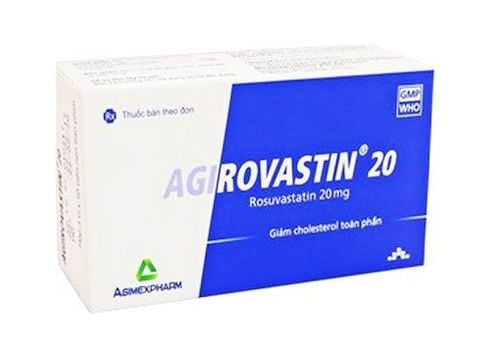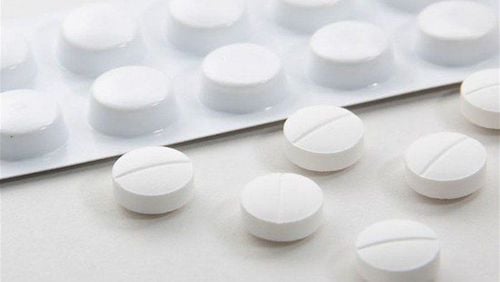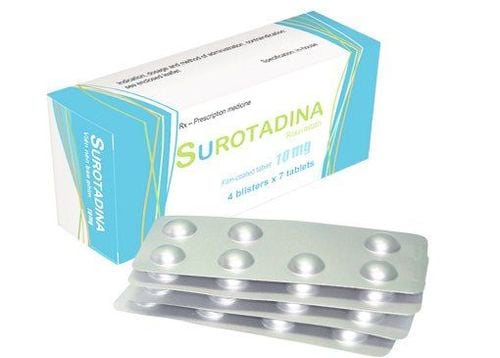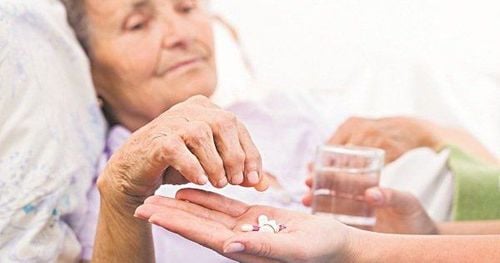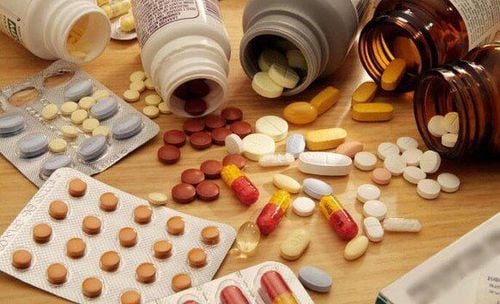This is an automatically translated article.
Ruvasan is commonly prescribed to treat conditions such as primary hypercholesterolemia or mixed dyslipidemia. Although Ruvasan can provide effective treatment benefits, some cases can still cause side effects if the patient takes the drug not exactly as directed by the doctor.1. What is Ruvasan?
Ruvasan belongs to the group of cardiovascular drugs, originating from India and currently widely circulated in Vietnam. Ruvasan drug is evaluated as an effective solution for cases of primary hypercholesterolemia or mixed dyslipidemia.The main ingredient in the drug Ruvasan is Rosuvastatin calcium 20mg content and some other excipients just enough. Ruvasan is prepared in the form of film-coated tablets and packed in a box of 2 blisters x 10 tablets.
2. What are the effects of Ruvasan?
2.1. Uses of active ingredient Rosuvastatin calcium
Rosuvastatin is known to be a selective and competitive inhibitor of HMG-CoA reductase, the main site of action is the liver - the target organ for lowering cholesterol. The Rosuvastatin component in Ruvasan has the effect of increasing the number of LDL receptors on the surface of liver cells, thereby enhancing the absorption and catabolism of LDL, while inhibiting the synthesis of VLDL in the liver, thereby making significantly reduced LDL and VLDL components.
The following are the pharmacokinetics of Rosuvastatin:
Absorption: Rosuvastatin reaches peak plasma concentrations approximately 5 hours after oral administration. The absolute bioavailability of the drug is about 20%. Distribution: The major site of distribution of Rosuvastatin is the liver. The volume of distribution of Rosuvastatin is approximately 134L. It is estimated that up to 90% of Rosuvastatin is bound to plasma proteins, mostly albumins. Metabolism: Only about 10% of Rosuvastatin is metabolized, of which the two major metabolites are Lactone and N-desmethyl. Elimination: Approximately 90% of a dose of Rosuvastatin is excreted unchanged in the faeces and the remainder is excreted in the urine. The plasma half-life is approximately 19 hours and there is no sign of an increase even at higher doses.
2.2. Indications - Contraindications to the use of Ruvasan
Ruvasan is prescribed by doctors to treat the following conditions:Treatment of primary hypercholesterolemia (type IIa, including heterozygous familial hypercholesterolemia). Ruvasan is often used as an adjunct to patients who have not responded adequately to diet or other non-pharmacological measures such as weight loss and exercise. Treatment of mixed dyslipidemia (type IIb). Ruvasan is used as an adjunct to diet and other lipid-lowering therapies such as LDL apheresis. However, the use of Ruvasan should be avoided in the following subjects without a doctor's prescription:
Patients who are allergic or have a hypersensitivity reaction to Rosuvastatin or any other ingredient in the drug. Patients with active liver disease, including persistent and unexplained elevations in serum transaminases; or serum transaminase levels 3 times the upper limit of normal. Contraindicated in patients with severe renal impairment, with creatinine clearance less than 30ml/min. Do not use Ruvasan if you have muscle disease or are taking Cyclosporin. Avoid taking Ruvasan for pregnant women, suspected pregnancy or nursing mothers.
3. Dosage and how to use Ruvasan effectively
3.1. Dosage instructions for Ruvasan
Use a starting dose of 5mg or 10mg/time/day. If necessary, the dose can be adjusted every 4 weeks. The dose of 40 mg should be applied if the patient has severe hypercholesterolemia and is at high risk for heart disease that does not respond to the therapeutic dose of 20 mg.Patients need to apply the correct dose of Ruvasan recommended on the package, leaflet or doctor's instructions. Absolutely do not arbitrarily use the drug or change the dose.
3.2. How to use Ruvasan correctly and effectively?
Ruvasan is available as a film-coated tablet for oral administration. Patients can take the drug at any time of the day, before or away from a meal, depending on the doctor's prescription.4. Side effects of the drug Ruvasan
Here are some possible side effects of Ruvasan:Immune system disorders. Hypersensitivity reactions, angioedema. Nervous system disorders with symptoms such as dizziness or headache. Digestive system disorders, such as nausea, vomiting, constipation, abdominal pain. Skin and subcutaneous tissue disorders such as rash, urticaria or itching. Connective tissue, musculoskeletal, and skeletal disorders, such as myalgia, rhabdomyolysis, or myopathy. Asthenia. Proteinuria. Increases CK concentration with dose. Increased Transaminases. When any of the side effects mentioned above appear, the patient should immediately notify the doctor so that there can be a remedy soon.
5. Precautions when treating with Ruvasan
5.1. What precautions should be taken while using Ruvasan?
People with a history of liver disease should use caution when using Ruvasan. In addition, patients with predisposing factors for rhabdomyolysis, such as personal and family history of hereditary myopathy, hypothyroidism, renal failure, history of muscle toxicity with enzyme inhibitors Other HMG-CoA reductases, alcoholics, over 70 years of age, are taking Fibratem or have conditions that increase blood levels of the drug require extreme caution when treated with Ruvasan.If CK concentration is greater than 5 x ULN or severe muscle symptoms develop, the patient should stop taking the drug immediately. Avoid taking Ruvasan with signs of sepsis, hypotension, trauma, major surgery, endocrine disorders, electrolyte disturbances, severe metabolic disorders or uncontrolled convulsions.
5.2. What other medicines does Ruvasan interact with?
According to research, Ruvasan has a risk of interaction when used with the following drugs:Cyclosporin taken with Rosuvastatin can increase the AUC values of Rosuvastatin by 7 times. Vitamin K antagonists. Gemfibrozil co-administered with Ruvasan may increase Rosuvastatin's AUC and Cmax by 2-fold. Antacids containing magnesium hydroxide and aluminum, when co-administered with Ruvasan can reduce plasma concentrations of Rosuvastatin by up to 50%. If you need to take both, you should take your antacid at least 2 hours after taking Rosuvastatin. Erythromycin increases intestinal motility, reducing Rosuvastatin AUC and Cmax by 20% and 30% when co-administered with Ruvasan. Gemfibrozil, Niacin or other Fibrates.
Please dial HOTLINE for more information or register for an appointment HERE. Download MyVinmec app to make appointments faster and to manage your bookings easily.




